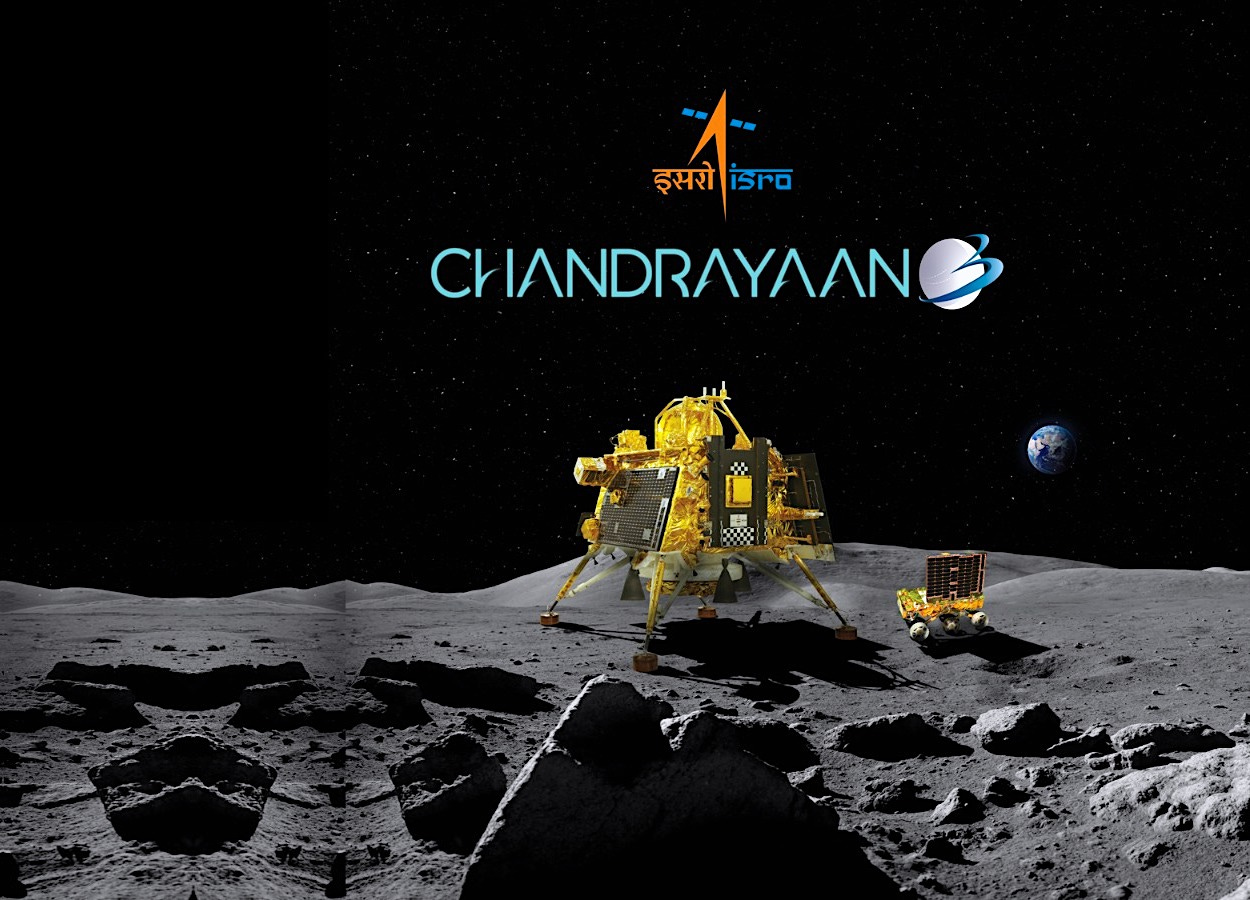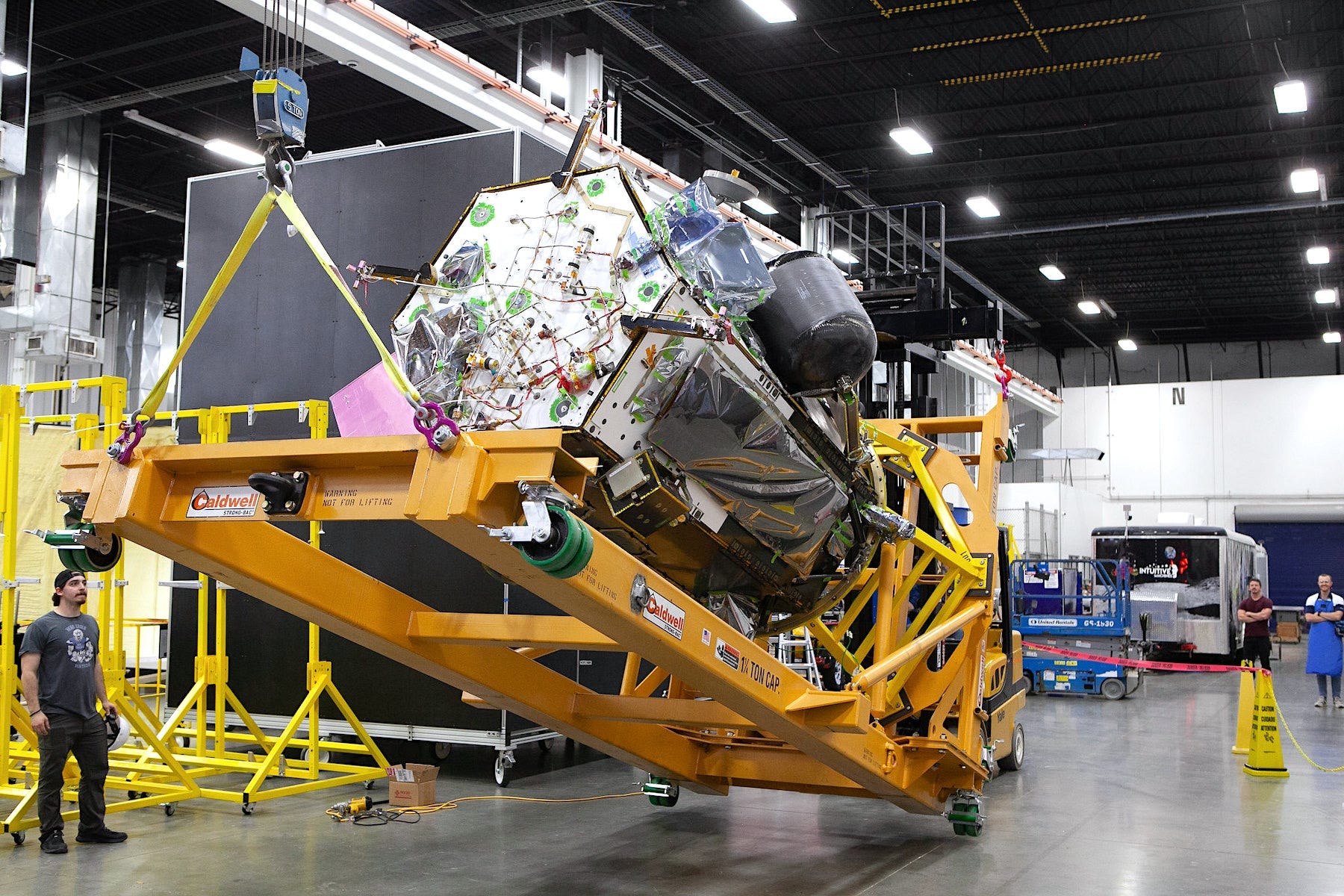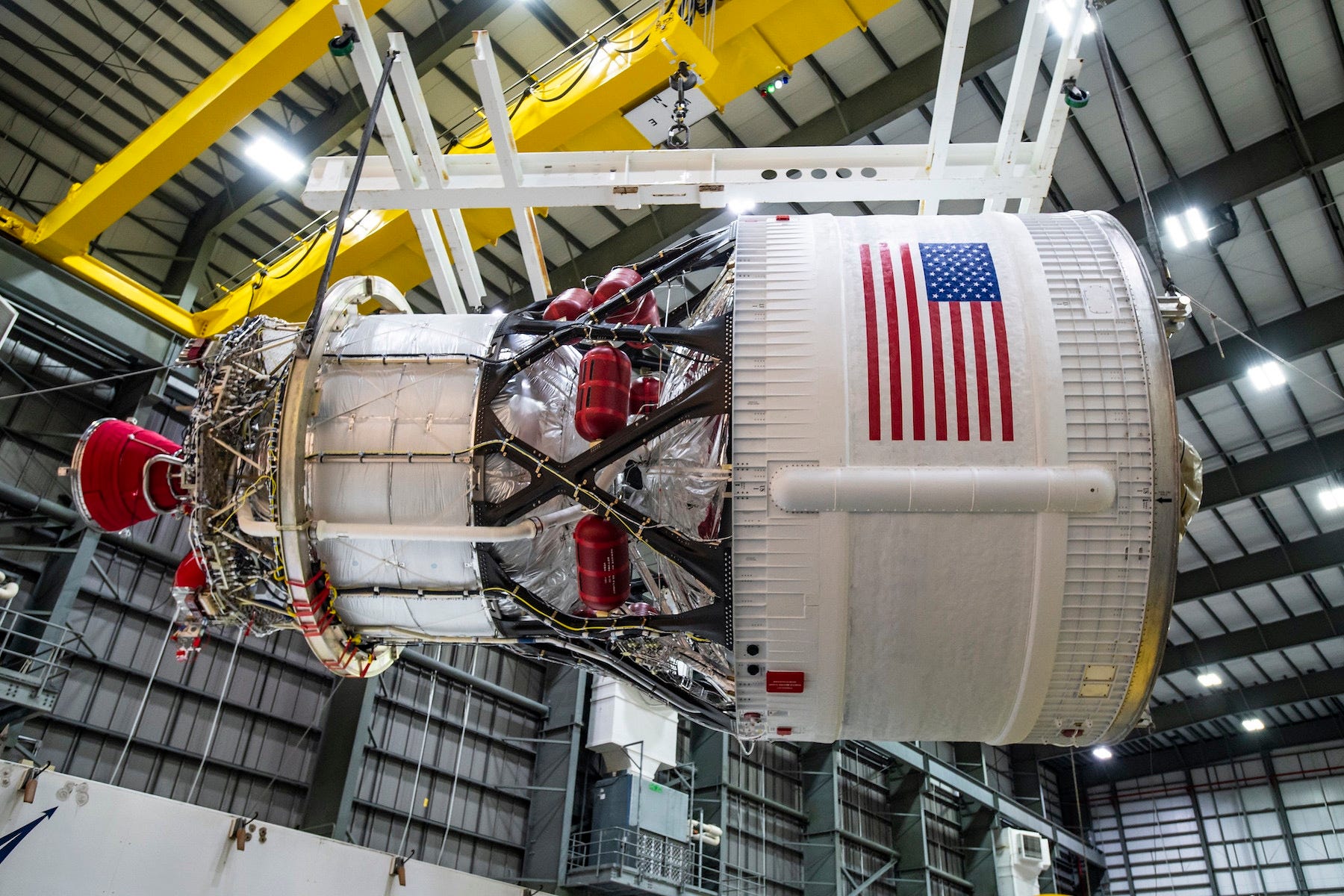Moon Monday #141: Luna 25 crashes as Chandrayaan 3 braces for a touchdown and three more missions head to the launchpad
Today I got my media registration approval to be at ISRO’s ISTRAC mission operations center in Bengaluru for the Chandrayaan 3 landing attempt this August 23! :D 🚀 🌗
<proceeds to publish this Moon Monday edition loaded with lunar updates, and then hurry up to pack my bag for tomorrow’s flight>
The fall of Luna 25, its science, and Russia’s lunar ambitions

Russia’s Luna 25 robotic Moon lander, launched on August 11 almost 47 years after the former Soviet Union returned lunar samples with Luna 24, successfully entered an elliptical lunar orbit on August 16 as planned. Shortly after, Luna 25 circularized its orbit to a roughly 100-kilometer altitude. Before it could begin its autonomous descent & landing on August 21, Luna 25 needed to reduce its perilune to 18 kilometers by firing its main engine again.
This maneuver on August 19 didn’t work as expected. Luna 25 went into emergency mode shortly after the engines fired, and Roscosmos lost contact with the craft about 45 minutes after. Efforts to hear from Luna 25 again until August 20 lead nowhere, implying the spacecraft likely wasn’t in any lunar orbit. As such, Roscosmos concluded that Luna 25 has crashed into the Moon. Anatoly Zak reports that IKI scientist Natan Eismont has said that problems with Luna 25 were discovered well before the fatal orbit-reducing maneuver. Roscosmos Director General Yury Borisov said the engine burn continued anomalously for 127 seconds instead of the planned 84 seconds. This would’ve resulted in Luna 25’s perilune being below the Moon’s surface.
Luna 25 is now the fourth of the six soft Moon landing attempts to have crashed within the last five years, joining the heartbreaking ruins of Beresheet, Chandrayaan 2, and ispace’s Hakuto-R spacecraft. China’s Chang’e 4 and Chang’e 5 are the only successes so far, with Chandrayaan 3 hopefully joining them this week.
Luna 25’s loss has multiple implications for Russia’s lunar and planetary endeavors:
- The truly unique science Luna 25 was to do is now lost to Luna. The lander’s eight instruments were going to study nearly every aspect of the local near-polar lunar environment—from the soil and subsurface to plasma and dust in the exosphere including any detections of water across it all. These investigations were complementary in nature to the surface science India’s Chandrayaan 3 is expected to produce, as both lunar landers take the first ever ground measurements from environmentally distinct near-polar locations as opposed every prior mission exploring equatorial or near-equatorial regions.
- The next Russian landing attempt of Luna 27 is five years away, and that’s the timeline from before Luna 25 crashed. Roscosmos Director General Yury Borisov had told TASS post-launch that the agency plans to launch the Luna 26 polar orbiter in 2027, and the high-precision Luna 27 lander in 2028. Since Luna 25 crashed prematurely before the descent could even begin, Roscosmos unfortunately couldn’t get any data from this critical phase to know how well its lander would’ve performed against engineered expectations. Alas, this would’ve proved useful for Luna 27. It’s now clear that Russia’s Luna program will contribute much more limitedly towards planning of the China-led long-term scientific Moonbase at the Moon’s south pole called the International Lunar Research Station.
- Mukunth mentions two notable political elements that help get a programmatic sense of Luna 25’s failure.
Chandrayaan 3 set to attempt a landing on August 23

ISRO Chandrayaan 3 Mooncraft performed another engine burn on August 16, which attained it a near-circular lunar orbit of 153 by 163 kilometers. On August 17, the Chandrayaan 3 lander separated from the propulsion module. It’s the latter which had been providing thrust to carry the combined stack from its initial post-launch Earth orbit all the way to the aforementioned circular lunar one. On August 18, the Chandrayaan 3 lander fired its own engines for the first time to reduce its perilune to 113 kilometers. A burn on August 20 put Chandrayaan 3 in its roughly intended final orbit of 25 by 134 kilometers. Today, August 21, ISRO established two-way communications between the lander and the Chandrayaan 2 orbiter as a redundant option should the lander’s direct-to-Earth communications system fail.
It’s from this lowest orbital point of 25 kilometers that Chandrayaan 3 will begin its autonomous landing attempt on August 23 to target the near-polar location of 69.37°S, 32.35°E. ISRO will broadcast the landing event on YouTube. To closely follow Chandrayaan 3’s landing and everything related to it, I cannot recommend anything more highly than the compilation by u/Ohsin, an admin of the r/ISRO subreddit:
In the meanwhile, Chethan Kumar reports that the propulsion module will stay in the ~150 kilometer circular orbit, and has more than 150 kilograms of fuel remaining onboard. The latter is more than what ISRO expected to be consumed with margins, which should extend the module’s nominal 6-month life to several years. Having said that, ISRO hasn’t provided a break-up of the fuel consumption during the propulsion module’s maneuvers from Earth orbit all the way to the Moon.
Many thanks to Epsilon3 and Marc Rayman for sponsoring this week’s Moon Monday.
Queue another Moon lander please

JAXA’s SLIM Moon lander is set to launch on the Japanese H-2A rocket on August 26 at 09:34 JST (00:34 UTC). The launch window runs through to September 15. The compact lander aims to demonstrate pinpoint lunar touchdown (~100-meter accuracy) with a low mass of just 730 kilograms. To that end, SLIM will attempt to land somewhere within the rocky ejecta of the 300-meter wide Shioli crater. Orbital data suggests that studying the crater’s ejecta using SLIM’s near-infrared, multi-band spectroscopic camera could enhance our knowledge about the Moon’s mantle and its formation. The official SLIM Press Kit from JAXA has an intriguing amount of mission specifics aided by cool graphics and explanations:
NASA CLPS updates

- Intuitive Machines announced that its first Moon lander IM-1 is complete, and that post several space-simulating tests the company will deliver it to SpaceX by September 15 for launch preparations. The companies are targeting a six-day launch window starting November 15. IM-1 will carry six NASA science & technology payloads to the polar Malapert A crater at 80°S as part of the agency’s CLPS program.
- The NASA-funded, lunar-water-studying Lunar Trailblazer orbiter is progressing towards an early 2024 launch. Lockheed Martin recently integrated into the 210-kilogram spacecraft its second and final instrument: the Lunar Thermal Mapper provided by the University of Oxford. Trailblazer is now undergoing the standard series of space-simulating tests to ensure its nominal functioning during all mission phases. The orbiter will provide us unprecedented, high-resolution global maps of the amount, distribution, and state of water across our Moon. To do so, an infrared spectrometer will detect water and hydroxyl (OH) molecules and their forms based on how the lunar surface reflects and absorbs infrared light. Since the temperature of the surface being mapped affects the results, the Lunar Thermal Mapper will simultaneously measure temperatures to correctly calibrate the water detections.
Crewed Artemis II Moon trip coming together
- Hardware progress continues for NASA’s Artemis II mission to fly four astronauts around our Moon and back circa early 2025. Following completing acoustic testing of the European Service Module (ESM) part of the Orion spacecraft in May, now NASA has completed the same for the Orion capsule itself which will host the astronauts. The test involved large speakers simulating the intense sounds and vibrations of an SLS rocket launch. During launch, Orion and ESM need to endure a maximum sound level of 140 decibels, an experience akin to standing next to a speaker at a live rock concert.
- In in meanwhile, NASA moved the 116-meter tall Mobile Launcher 1 of the SLS rocket to the Launch Pad 39B at the Kennedy Space Center in Florida on August 17. Over the next few months teams will conduct a variety of tests and continue ground systems upgrades, including the new 5.3-million-liter liquid hydrogen sphere and an emergency egress system. The Mobile Launcher 1 needed repairs before it could be used for Artemis II because it sustained more damage than expected during Artemis I’s launch. Stephen Clark provides a great overview of NASA’s timeline for hardware preparations leading up to Artemis II’s launch.
- ULA has delivered the upper stage of the SLS rocket to NASA designated for the crewed Artemis III mission. This stage will push the Orion spacecraft hosting NASA astronauts to the Moon for an eventual Moon landing with a separate lander that docks with Orion in lunar orbit.

More Moon
- Astrobotic is building a simulated lunar test field on Earth to test its lunar landing and mobile exploration technologies with Xodiac rockets that it inherited from its Masten Space acquisition. Astrobotic says there will also be a facility for simulating the extreme lighting conditions encountered at the Moon’s poles. Astrobotic has won two CLPS task orders to carry NASA’s science & technology payloads to the Moon this year and next, and to demonstrate wired power transmission on the Moon in a 2026 mission.
- New research led by scientists at the Planetary Science Institute used public microwave data from China’s Chang’e 1 and Chang’e 2 orbiters and found a hotspot below the lunar farside volcano of Compton-Belkovich, Laurence Tognetti reports. The researchers say that a large granite magma chamber enriched in radioactive elements lying beneath the volcano once fed its activity, much like how many volcanoes work on Earth.
